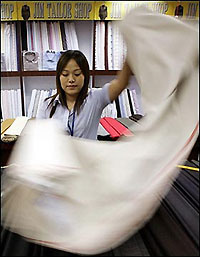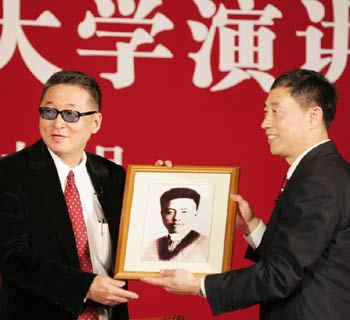|
'Increasing competition brings trade frictions'
By Guo Nei (China Daily)
Updated: 2005-09-22 06:25
SHANGHAI: It is the growing competitiveness, rather than the low-quality
excess of Chinese textiles and apparels, that has led to the country's frequent
trade frictions with developed markets, an insider said recently.

A vendor measures cloth at a textile market in
Beijing. The US government said it will hold a new round of negotiations
with China on an agreement to regulate textiles trade here on September
26-27.[Reuters] | Du Yuzhou, president of China
National Textile and Apparel Council, told Xinhua News Agency on Tuesday that
the trade frictions also indicate that the European Union and US markets are
"retreating from free trade practices."
Since April this year, the EU and the US markets have both imposed special
protection measures against specific Chinese textiles. To avoid trade frictions,
China announced the raising of export tariffs on 74 categories of textiles
starting June 1.
In mid-June, China and the EU reached an agreement on Chinese textile
exports.
Two months later, however, more than 80 million pieces of China-made garments
were found stockpiled at European ports as they exceeded the import quotas
agreed on by both sides.
The September 5 agreement between Commerce Minister Bo Xilai and EU Trade
Commissioner Peter Mandelson ended the impasse. Some of the garments held up
would enter the EU and others be added to China's 2006 textile quota.
Du said it is unreasonable to say China's textile firms are excessive and
growing too fast, or that China has compromised so much in negotiating with the
two markets that it has hurt the domestic industry.
|
 | | | Soaring tide of Qiantang River | | |  | | | Li Ao in Peking University | | |  | | | Heavy rainfall hits Lianyungang | | |
|
 |
|
 |
|
|
Today's
Top News |
|
|
|
Top China
News |
 |
|
 |
|
|
|
|
|
|